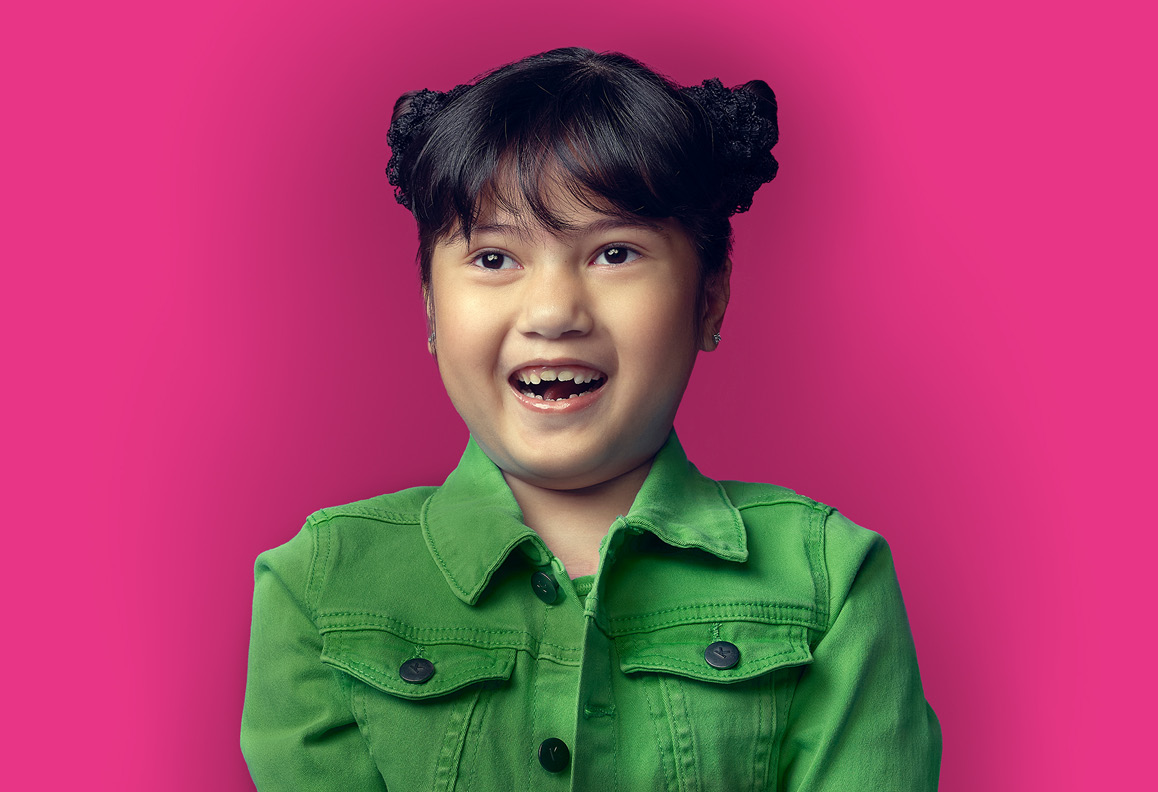BIRTH DEFECT OF A WARRIOR
Seven years ago, Maribeth Reyes had never heard of Tetralogy of Fallot (TOF), pulmonary atresia, or major aortopulmonary collateral arteries. She didn’t even know that babies could be born with congenital heart defects.
But here she was five months pregnant, in her then-doctor’s office 100 miles from home, getting an unexpected crash course in this complex set of heart abnormalities.
She’d just been told her unborn daughter Audrey had them all.
In Audrey’s heart, a whole series of anatomical issues — holes, underdeveloped and narrow arteries, abnormal positioning, obstructions and more — were severely limiting the blood supply to her lungs.
In fact, instead of the large, main pulmonary artery that typically carries blood to the lungs, Audrey’s heart had sprouted tiny collateral arteries to do that work. “Like tree branches or spaghetti,” explains Maribeth, “only the size of literal threads.”
The cardiologist was very blunt about Audrey’s future: she either wouldn’t survive or would potentially need a lifetime of surgeries.
Until Audrey was born, it would be impossible to know more than that.
The fear of heart failure
While Audrey did need a heart procedure upon birth, she was able to go home to grow and gain strength for the future surgeries she would need.
Four months later Audrey went into her first cardiac failure and was rushed by helicopter for open-heart surgery. Her chances of survival quickly became 50-50.
For days, Audrey relied on advanced machines for survival. Then she had another emergency procedure, this time a cardiac catheterization performed by a tube guided through her blood vessels. It would try to balloon out and stent open some of her collateral arteries to provide more blood to the heart.
The expert L.A. pediatric cardiac interventionist, Dr. Frank Ing, confessed to Maribeth that he was concerned. “With arteries the size of threads,” explains Maribeth, “the risk of bursting them is significant.”
But ten hours later, Dr. Ing came out of the procedure smiling.
“He saved her life. It was a huge moment,” Maribeth says. Audrey could finally come home again.
Over the next four and a half years, Audrey would have a dozen more heart procedures, most performed by Dr. Ing, and spend vast amounts of time on ventilators and in recovery.
Because of her fragile heart, limited oxygen, and the risk of viruses that her body couldn’t easily overcome, Audrey couldn’t run, play, or go to school like normal children.
Finally, after her third open-heart surgery in San Francisco stabilized her health, Audrey’s first words out of recovery were, “Can I run now?”
“He was our lifeline. I really don’t believe Audrey would be here without him.”—Maribeth, Audrey’s mom
Following their lifeline to Sacramento
But the roller coaster took another plunge. In Audrey’s next routine cardiac catheterization procedure to take more pictures inside her heart, the tube ruptured an artery. Audrey was back in the ICU and would cough up blood for months. It was one of only two catheterizations in her life not performed by Dr. Ing, who’d recently taken a position with UC Davis Health in Sacramento.
“Just when you think the roller coaster is over, in an instant you find out it’s not,” says Maribeth.
A month later, Maribeth and her family moved to Sacramento for care at UC Davis Health and once again from Dr. Ing.
“When Dr. Ing left, I just knew that her care was slipping through the cracks. That last procedure was the final straw.” In all the precipitous ups and downs in Audrey’s journey, Dr. Ing had been the difference between life and death. “He was our lifeline,” says Maribeth. “I really don’t believe Audrey would be here without him.”
“Today, she’s such a free spirit. I’ve told Audrey her whole life that the scars on her chest are proof of her extra-special bravery. She knows it’s true. Now, she’s not afraid of anything.”—Maribeth, Audrey’s mom
Finding her freedom
Under the care of Dr. Ing and UC Davis Health, there have been no emergencies and zero major issues. With additional speech and behavioral therapy available at UC Davis Health, Audrey has made up the lost ground from so much time spent in hospitals.
After years of pain, the right care completely changed her world.
“Today, she’s such a free spirit,” says Maribeth. She’s told Audrey her whole life that the scars on her chest are proof of her extra-special bravery. “She knows it’s true. Now, she’s not afraid of anything.”

